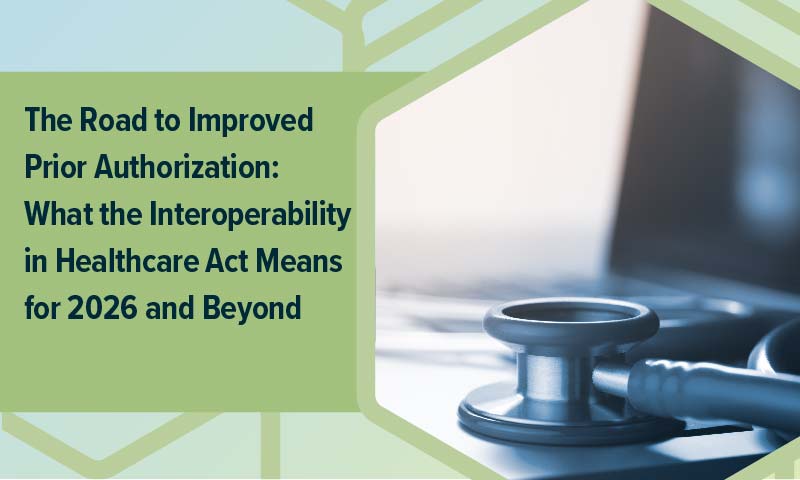The Road to Improved Prior Authorization: What the Interoperability in Healthcare Act Means for 2026 and Beyond

As we approach 2026, the Interoperabilityin Healthcare Act is set to bring about significant changes in how healthcare data is shared and accessed,streamlining various processes within the industry. A key focus is improving the prior authorization (PA) process—an often cumbersome and time-consuming requirement that has long been a source of frustration for both patients and providers. In June 2025, health plans made significant commitments to streamline and simplify PA workflows, demonstrating their dedication to enhancing care delivery while reducing administrative burdens. At careviso, we support providers and patients by streamlining prior authorization services in collaboration with health plans.
Health Plans’ Commitment to Reform Prior Authorization
On June 23rd, in a major announcement from the health insurance industry, health plans have pledged to implement a series of reforms designed to improve the prior authorization process. This includes using standardized electronic prior authorization submissions, expanding real-time response capabilities, and enhancing transparency around determinations. These changes will be implemented over the next few years, with major milestones set for January 2026 and 2027, as detailed below:
1. Reduction in Scope of Prior Authorization (2026)
Each plan will reduce the number of services subject to PA, depending on their market, to make the process more efficient.
2. Ensuring Continuity of Care During Plan Changes (2026)
Plans will honor existing prior authorizations for patients changing insurers during ongoing treatments, ensuring smoother transitions and minimizing care disruptions.
3. Standardized Electronic Prior Authorization (2027)
Healthplans will adopt common, transparent submission formats for prior authorizations, using FHIR® APIs to facilitate smoother, faster processes.
4. Real-Time Responses for Electronic Prior Authorization (2027)
At least 80% of PAs will be processed in real-time, reducing wait times and enhancing patient care.
These efforts represent a significant step toward a more seamless healthcare experience. As Kim Keck, CEO of the Blue Cross Blue Shield Association, stated,“This is an important foundation to address bigger problems, especially when technology and interoperability can deliver real improvements to patient experience.”
careviso’s Experience with Prior Authorizations
As a leading prior authorization vendor in the diagnostic space, we’ve been closely monitoring the effectiveness of the PA process. Our audit of 2024 prior authorization volumes revealed multiple concerning trends:
· 25% of diagnostic testing PAs were denied by health plans.
· 65% of denials were due to claims being considered non-medically necessary by the payer.
· 8% of denials were based on out-of-network provider issues.
· 7% of denials occurred because the service was not covered under the patient's benefit plan.
These statistics emphasize the need for reform in how prior authorizations are managed and approved. Health plans’ new commitments to streamline the PA process will likely address some of these issues, particularly regarding transparency and reducing the number of services that require authorization.
How the Interoperability in Healthcare Act Will Help
The Interoperability in Healthcare Act is designed to address the fragmentation of healthcare data systems by mandating that more information be shared electronically and seamlessly. Released back in 2024, the act requires health plans, providers, and payers to adopt more standardized data formats and work with APIs to ensure smoother communication between the plan and provider. These changes are expected to:
· Improve the efficiency of PA workflows, reducing delays caused by manual processes.
· Facilitate quicker access to medically necessary services, as the electronic exchange of information speeds up approval times.
· Enable real-time responses, further aligning with the health plans’ commitment to process 80% of electronic PAs in real-time by 2027.
Together, the Interoperability Act and the health plans’ reforms should help alleviate some of the issues revealed in our audit, such as delays and denials based on outdated or unclear criteria.
careviso’s Role in the Transition
As a company committed to improving prior authorization workflows, we believe the changes ahead will benefit both patients and providers Our platform, seeQer, is already helping healthcare providers navigate the complexities of prior authorizations by offering real-time benefits verification and data transparency, along with accurately determining when a prior authorization is required. As the industry progresses toward greater interoperability and a more efficient PA process, careviso’s technology will continue to be at the forefront, ensuring that both providers and patients can benefit from faster, more accurate authorization decisions.
Discover how seeQer informs patients and transforms practice.
Schedule a seeQer demonstration of benefits verifications, cost assessments, and other essential tasks in the platform. Learn how seeQer can help your organization reduce administrative burden, transform cumbersome processes, and provide transparency that empowers patients in a complex and ever-changing industry.

